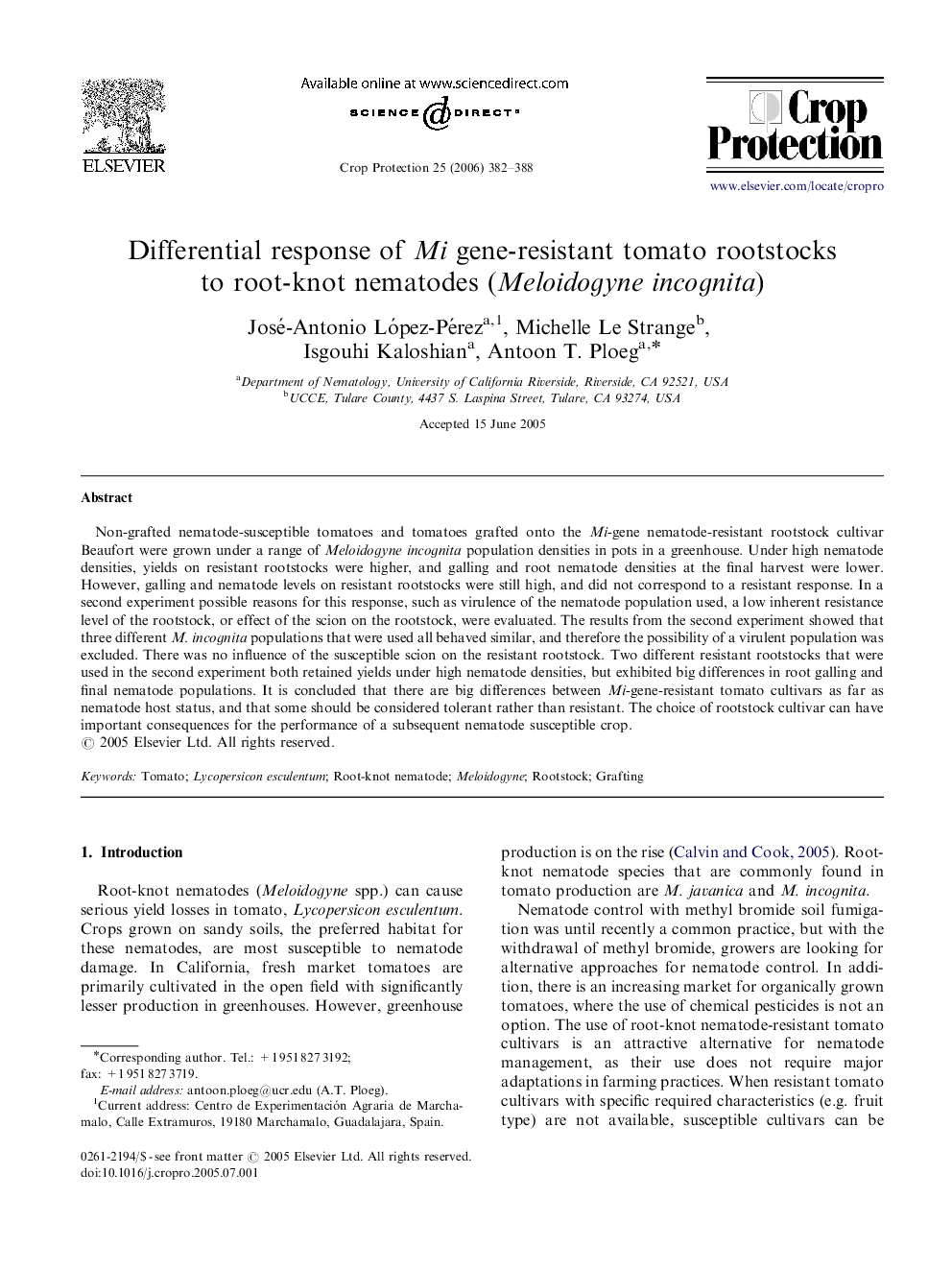| Article ID | Journal | Published Year | Pages | File Type |
|---|---|---|---|---|
| 4507370 | Crop Protection | 2006 | 7 Pages |
Non-grafted nematode-susceptible tomatoes and tomatoes grafted onto the Mi-gene nematode-resistant rootstock cultivar Beaufort were grown under a range of Meloidogyne incognita population densities in pots in a greenhouse. Under high nematode densities, yields on resistant rootstocks were higher, and galling and root nematode densities at the final harvest were lower. However, galling and nematode levels on resistant rootstocks were still high, and did not correspond to a resistant response. In a second experiment possible reasons for this response, such as virulence of the nematode population used, a low inherent resistance level of the rootstock, or effect of the scion on the rootstock, were evaluated. The results from the second experiment showed that three different M. incognita populations that were used all behaved similar, and therefore the possibility of a virulent population was excluded. There was no influence of the susceptible scion on the resistant rootstock. Two different resistant rootstocks that were used in the second experiment both retained yields under high nematode densities, but exhibited big differences in root galling and final nematode populations. It is concluded that there are big differences between Mi-gene-resistant tomato cultivars as far as nematode host status, and that some should be considered tolerant rather than resistant. The choice of rootstock cultivar can have important consequences for the performance of a subsequent nematode susceptible crop.
